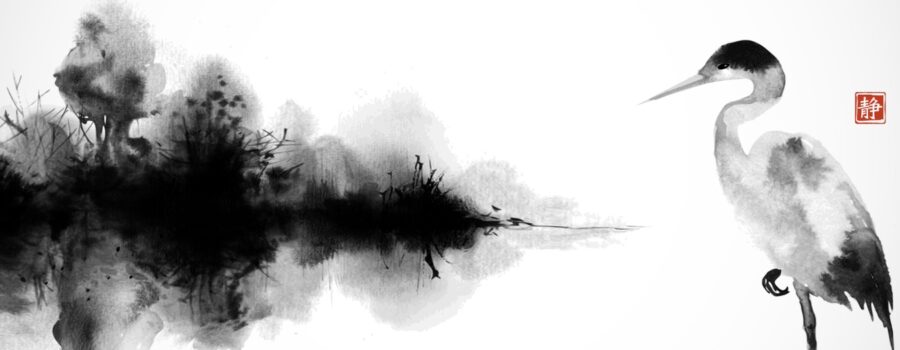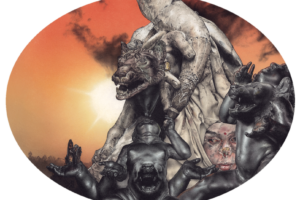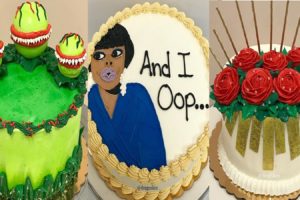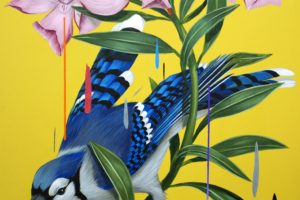April | SHADOWS ON THE GROUND: CONSTELLATIONS
Stellar Indemnification: Facing the Truth
By Tricia Stewart Shiu
Stellar Indemnification: Facing the Truth — Read by Tricia Stewart Shiu
In the early 1500s, a young painter and son of a peasant managed a feat known to few artists of that time. Qiu Ying (c. 1494–c. 1552) impressed and gained the support of several wealthy patrons. “With his special gift for copying paintings, Qiu Ying found favor among collectors, bringing him an opportunity to copy and learn from Song and Yuan dynasty paintings in the collections of the Jiangnan area and greatly broadening his artistic scope.”

He was adept at painting in various styles like ink-wash and blue and green style, but he excelled at gongbi brush technique, well known for its delicate and intricate brush strokes.
Qiu Ying’s paintings are housed everywhere from the Vatican to the Los Angeles County Museum of Art (LACMA). He is, most certainly, a world-renowned artist whose works are priceless.
So, it is no surprise that The National Endowment of the Arts, which manages the Arts and Artifacts Indemnity Program on behalf of the Federal Council on the Arts and the Humanities, chose to Indemnify the first exhibition, ever, held outside of Asia for the painter, Qiu Ying. Last year, LACMA hosted Where the Truth Lies: The Art of Qiu Ying.
ARTISTIC ALLEGORY | LE MOT JUSTE
Every year, since 1975, The Arts and Artifacts Indemnity Program has accepted applications both domestically and internationally, for artwork, artifacts or objects, rare documents, books, and other printed materials, photographs, films, and electronic materials. “Such objects must have educational, cultural, historical, or scientific value,” the programs says, “and the exhibition must be certified by the Secretary of State’s designee as being in the national interest.
Here’s where things get interesting, though. There are lots of holes in Qiu Ying’s biography and his works are challenging to authenticate. “There are estimated to be hundreds or thousands of copies and forgeries for every authentic Qiu Ying painting,” says William Poundstone on his blog Art and Chaos.

In fact, the curator of Where the Truth Lies, Stephen Little, weighs in by saying, “Few artists in Chinese history have proven as enigmatic as the great Ming dynasty painter Qiu Ying, honored as one of the Four Great Masters of the Ming dynasty. His is one of the most copied arts in Chinese history.”
Kealey Boyd writes in, “A Closer Look at China’s Most Enigmatic, and Most Copied, Artist,” “Despite this iconic status and passage of 500 years, unresolved questions around the artist persist. Only three paintings are dated by his hand, resulting in a flawed chronology of his production. Biographical information, such as the dates of his birth and death is unknown. It’s not unusual to lack this documentation among lower socioeconomic classes from the Ming period, but if he was of a lower class, this prompts more questions about how the artist ascended in the cultural hierarchy.”
“Where the Truth Lies grapples with such issues as artists who cross social boundaries, literacy, and the importance of connoisseurship in determining quality and authenticity. This will be the first exhibition on Qiu Ying ever organized outside of Asia.” Says the LACMA website. The exhibition will also include works by his predecessors and teachers, his daughter Qiu Zhu, and followers from the early 16th through the mid-20th century.
 The exhibit is curated chronologically and Mr. Little chose to use the obvious challenges to create some healthy curiosity with visitors. “Two fan paintings hang at the entrance of Where The Truth Lies: The Art of Qiu Ying at the Los Angeles County Museum of Art (LACMA),” said Kealey Boyd, who visited the exhibit in person, “The exhibition’s curator, Stephen Little, withholds the respective wall labels, taunting the viewer to claim the genuine Qiu Ying based only on observation.”
The exhibit is curated chronologically and Mr. Little chose to use the obvious challenges to create some healthy curiosity with visitors. “Two fan paintings hang at the entrance of Where The Truth Lies: The Art of Qiu Ying at the Los Angeles County Museum of Art (LACMA),” said Kealey Boyd, who visited the exhibit in person, “The exhibition’s curator, Stephen Little, withholds the respective wall labels, taunting the viewer to claim the genuine Qiu Ying based only on observation.”
The irony is, of course, that although Qiu Ying’s training at copying paintings for wealthy patrons brought him global and historical notoriety, his own paintings were, eventually and prolifically, copied, as well.
The genuine article vs. a reasonable facsimile—to the naked eye, they could pass as truth. Only the discerning connoisseur can truly appreciate the breathtaking detail of each work of art.





